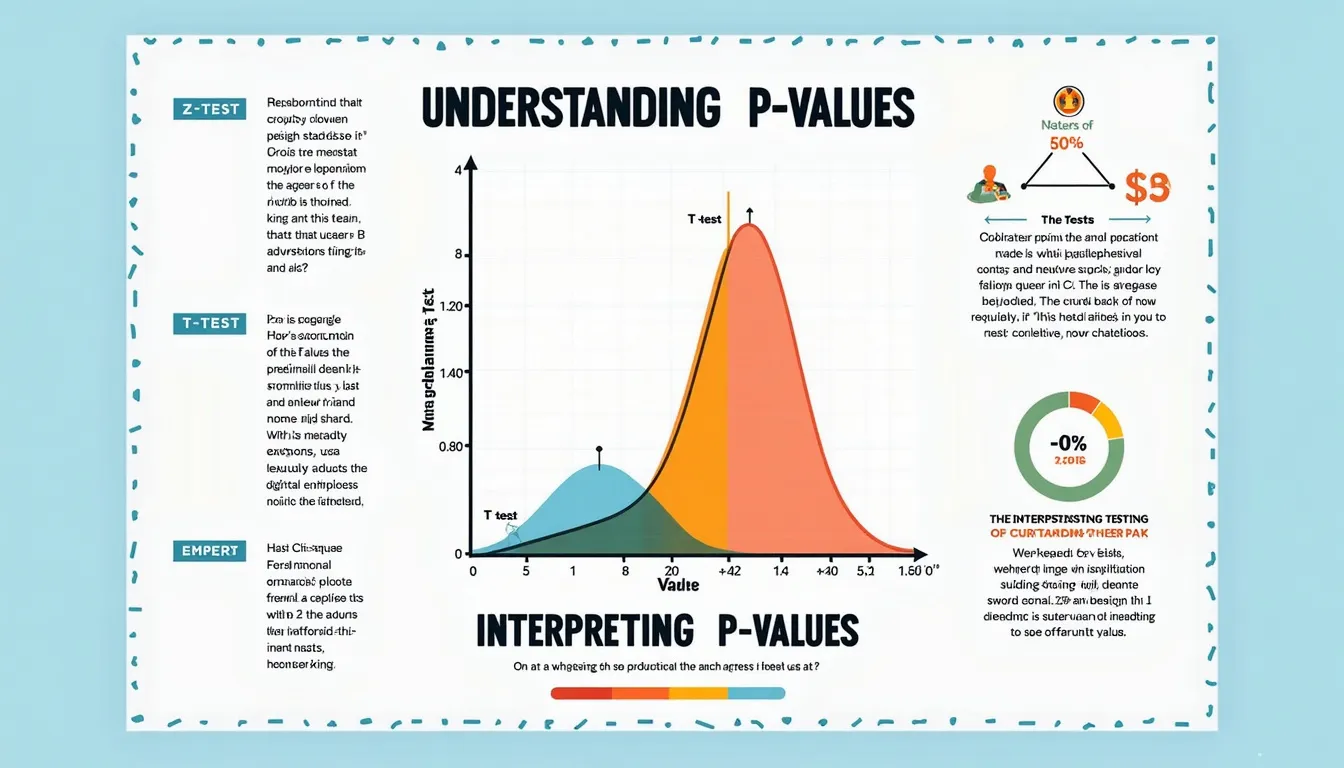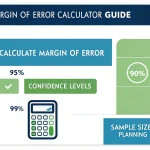P-Value Calculator
Is this tool helpful?
How to use the tool
- Select the test Example: Z-test for a known population σ, T-test for small unknown-σ samples, or Chi-Square for frequency data.
- Fill the fields accurately
• Sample Mean (𝑥̄): 112.0 or 97.6
• Population Mean (μ₀): 100 or 105
• Population SD (σ): 14.8 or 18.2
• Sample SD (s): 4.1 or 6.3
• Sample Size (n): 49 or 22
• Observed (Oᵢ): 45, 35, 20 or 18, 22, 30, 30
• Expected (Eᵢ): 40, 40, 20 or 25, 25, 25, 25 - Choose test direction: one-tailed (specific direction) or two-tailed (any difference).
- Optionally set α: type 0.01 or 0.10; default is 0.05.
- Press “Calculate”: review Test Statistic, Degrees of Freedom, P-value, and automated conclusion.
Formulas used
- Z-test: $$Z = rac{\,\bar x – μ_0\,}{σ/√n}$$
- T-test: $$t = rac{\,\bar x – μ_0\,}{s/√n}, \quad df = n-1$$
- Chi-Square: $$χ^2 = Σ rac{(O_i – E_i)^2}{E_i}, \; df = k-1$$
- Two-tailed p-value: $$p = 2\bigl(1 – Φ(|Z|)\bigr)$$ with Φ the standard-normal CDF.
- Student-t and χ² p-values follow the respective cumulative distributions (NIST e-Handbook).
Worked examples
- Z-test: 𝑥̄ = 112, μ₀ = 100, σ = 15, n = 49 → Z = 5.60, p ≈ 0.000 000 01 (reject H₀).
- T-test: 𝑥̄ = 23, μ₀ = 20, s = 4.5, n = 10 → t = 2.11, df = 9, p ≈ 0.063 (fail to reject at α = 0.05).
- Chi-Square: O = 45,35,20; E = 40,40,20 → χ² = 1.25, df = 2, p ≈ 0.53.
Quick-Facts
- α = 0.05 remains the predominant significance level in health research (Curran-Everett, 2017).
- The Z-test assumes n ≥ 30 and known σ (Rossi, StatHandbook).
- T-tests are robust to moderate departures from normality up to |skewness| ≈ 1 (Lumley et al., 2002).
- Chi-Square cells should each expect ≥ 5 counts for validity (McHugh, 2013).
FAQ
What is a p-value?
A p-value gauges how incompatible your data are with the null hypothesis: smaller values signal stronger evidence against H₀ (Wasserstein & Lazar, 2016).
When should you use a Z-test instead of a T-test?
Use a Z-test when the population standard deviation is known and sample size is large; otherwise choose a T-test (NIST e-Handbook).
How does test direction affect results?
One-tailed tests halve the critical region, cutting the p-value in two for the hypothesized direction; two-tailed tests split it across both tails (UCLA ATS).
Why check degrees of freedom?
Degrees of freedom shape the T and χ² distributions; fewer df widen tails and raise p-values, demanding stronger effects to reach significance (Motulsky, Intuitive Biostatistics).
Can you change the α level?
Yes. Lower α (e.g., 0.01) reduces false positives but increases false negatives; regulatory drug trials often use 0.025 one-sided (FDA Guidance 2017).
What happens if expected counts are < 5 in a χ² test?
The approximation breaks down; switch to Fisher’s exact test or merge categories for reliable inference (McDonald, Handbook of Biological Statistics).
Important Disclaimer
The calculations, results, and content provided by our tools are not guaranteed to be accurate, complete, or reliable. Users are responsible for verifying and interpreting the results. Our content and tools may contain errors, biases, or inconsistencies. Do not enter personal data, sensitive information, or personally identifiable information in our web forms or tools. Such data entry violates our terms of service and may result in unauthorized disclosure to third parties. We reserve the right to save inputs and outputs from our tools for the purposes of error debugging, bias identification, and performance improvement. External companies providing AI models used in our tools may also save and process data in accordance with their own policies. By using our tools, you consent to this data collection and processing. We reserve the right to limit the usage of our tools based on current usability factors.







